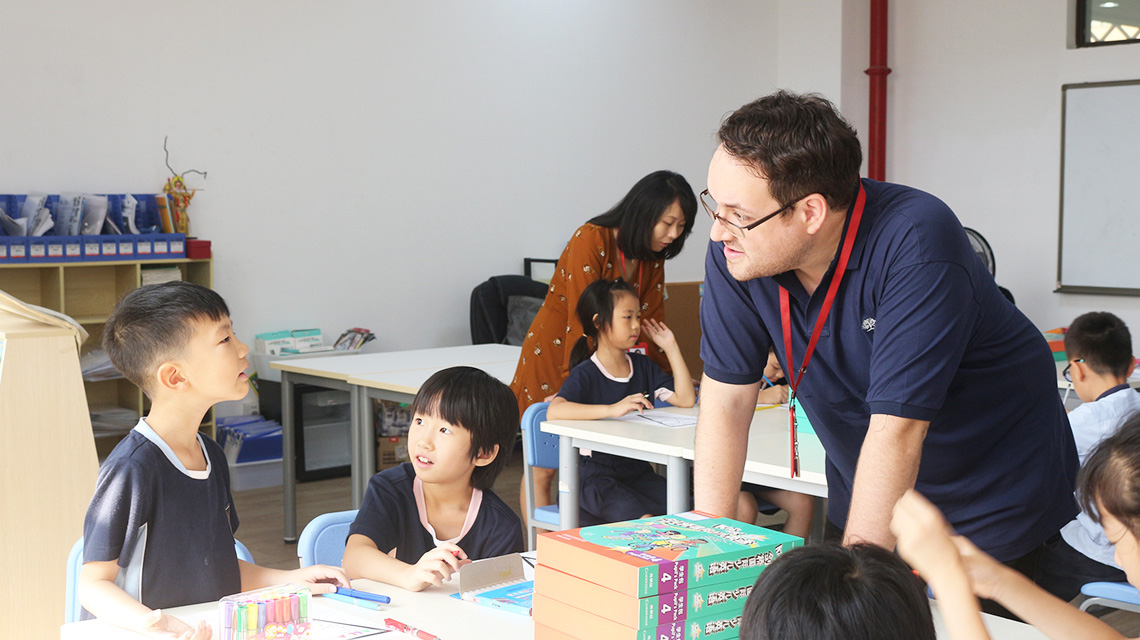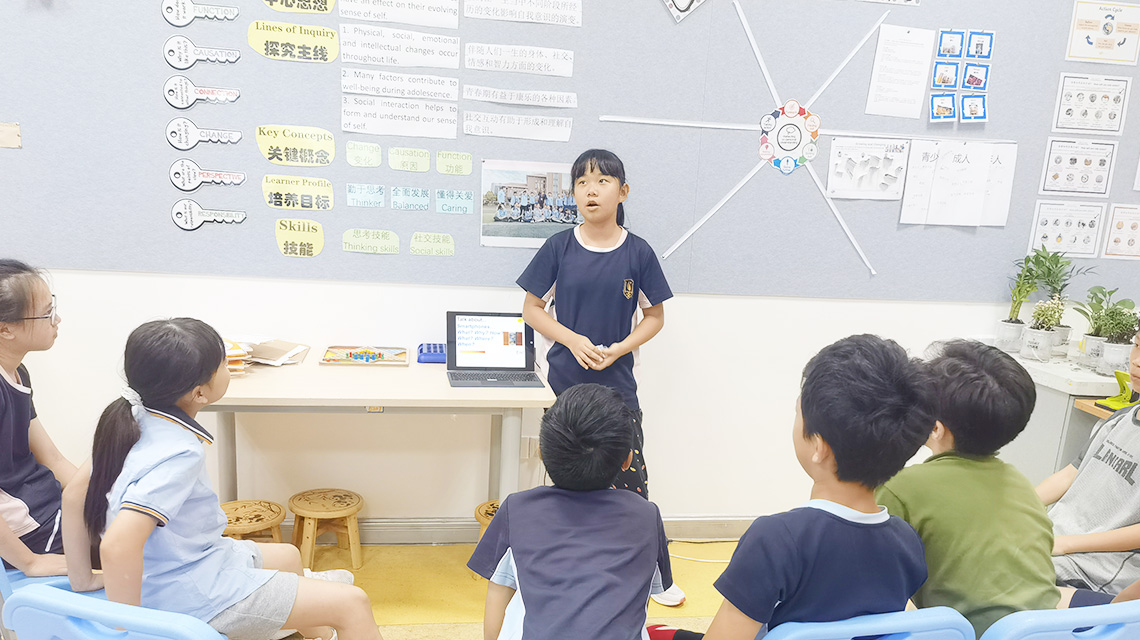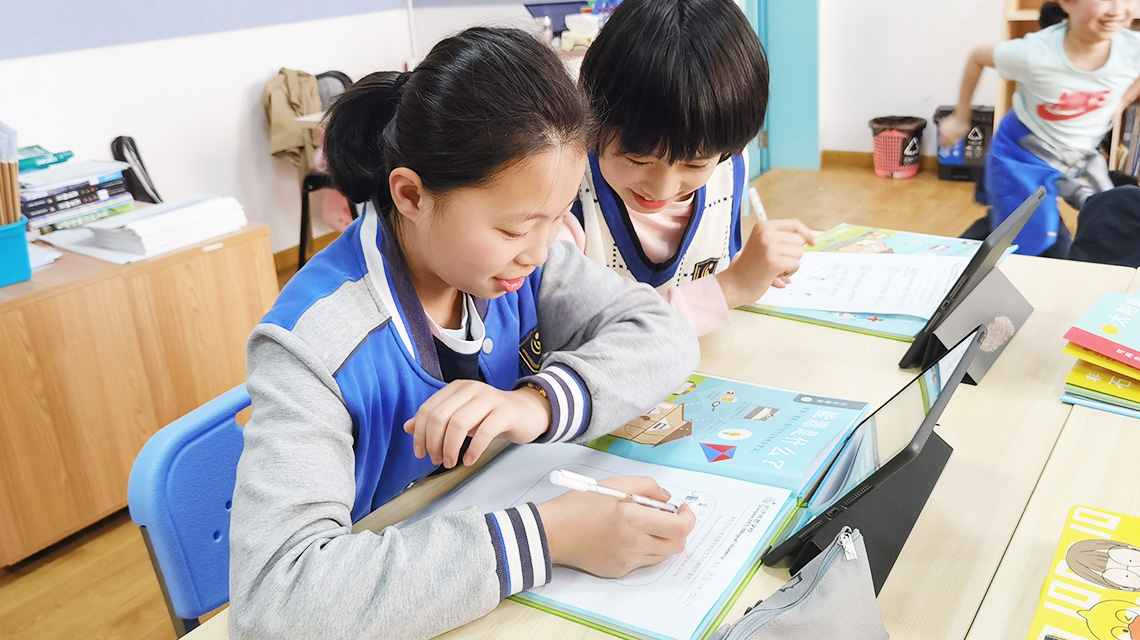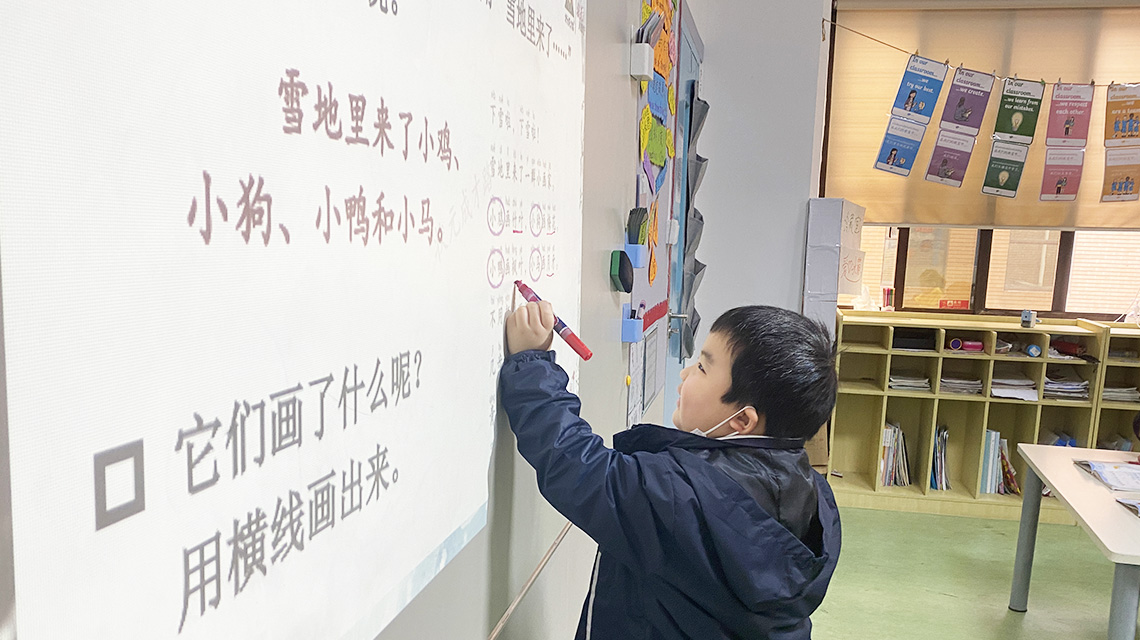Core Courses
Languages
Changsha WES (Bilingual) Academy is a bilingual school (Chinese / English), where all teachers are also language instructors. Every child is a language student, regardless of the language they speak at home or their country of origin. They all have their own cultural heritage and contribute this in a unique way, which is crucial for their cognitive development and the preservation of their cultural identity. Chinese is the language that unites our community and our language of instruction.
For this reason, our school is committed to create a learning environment that encourages and supports language development in a multilingual environment. This approach, combined with a learning methodology based on personal initiative, promotes the development of students into self-confident, creative and responsible individuals.
As part of our Co-Curricular Activity program, The third language can be studied as well.
-
Our Chinese Language curriculum is based on the Chinese National Curriculum and the Language scope and sequence from the International Baccalaureate Primary Years Program. Our curriculum focuses on cultivating students' ability to use language through speaking, reading, writing, and presenting thereby improving students' thinking ability and their quality of thinking. The curriculum is mainly based on required textbooks which are actively supplemented by teachers. Through the national curriculum, students learn more about Chinese culture and enhancing students' sense of national cultural identity and cultural self-confidence. Classroom teaching implements the overall teaching of the units of the national curriculum and carries out interactive, holistic, inquiry-based and project based learning with driving questions. Chinese Language arts is integrated within the transdisciplinary Units of Inquiry.
-
Our English classes aim to help our students to develop their language skills so that they will be ready for high school where English will become the language of Instruction. Our English curriculum integrates the Cambridge Primary Framework for English and the Chinese National Curriculum. Students also learn the English Language within the context of the PYP Units of Inquiry they are exploring and holistically develop as they progress with us.
Resources include:
- Reading A to Z: Reading A to Z is a reading system that functions with 29 graduated levels of difficulty, beginning with level AA (beginner) and ending with level Z2 (advanced). This resource is utilized in classes, during our morning reading time and at home. Through focused instruction and other strategies, Reading A to Z helps build phonological awareness, reading skills, fluency, and comprehension. These dimensions of reading are integrated into every reading selection and provide a supportive and graduated pathway for children to take as they advance up the reading ladder and progress as communicators. Each student also has access to an online Reading A – Z account providing them with a wealth of reading material that can be used at school and at home.
- Kidsbox: Kidsbox is a curriculum resource based on Cambridge English. English classes use Kidsbox as a base for English learning so that students can be prepared for the Cambridge Young Learner Examinations (Starters, Movers, and Flyers).
Differentiation:We understand our classrooms are a diverse community of learners. Differentiation helps students to acquire, demonstrate and act upon knowledge at a readiness level that is more comprehensible to them. Differentiation occurs in classrooms by teachers adapting what they teach, their teaching process, and the materials used. Teachers also differentiate through class routines and through simplifying or expanding things to convert the content into something that is more digestible for individuals or groups of learners. Content, routines and instruction is therefore tailored to meet individual or group needs.
Pull Out Support:Students also have the opportunity to participate in pull out classes. These allow for students to receive closer attention and extra support. Pull out support is designed with the aim of helping students build up their ability, confidence and core skills in order to be more fully integrated into the English language environment provided in the classroom. Other forms of pull out support are given to expand upon and challenge students who have the capability to go above and beyond the scope and content of regular classes.
Mathematics
The aim of the Mathematics curriculum in our Primary School is to strive for enjoyment and excellence in mathematical applications and to provide students with the skills to communicate their mathematical thinking confidently and effectively. Students are given the opportunity to develop the knowledge and skills required to apply mathematics in the world and learn to recognise links between mathematics and other subject areas.
Our curriculum is based upon the Chinese National Curriculum and the International Baccalaureate Primary Years Program.
In addition to the required national curriculum textbooks, we also use a variety of textbooks and websites, depending on student ability. Emphasis will mostly be on ‘using and applying mathematics to solve problems’. Students undertake numerous problem-solving exercises, investigations, puzzles and games. They will learn to work in a systematic and logical way, appreciating the power and beauty of Mathematics along the way.
In classes students often work in groups to better facilitate collaboration, communication, and evaluation. Students are grouped heterogeneously (students with different abilities grouped together) and homogenously (students grouped with other students at the same ability) according to the needs of the students and the lesson. We recognize the importance of meeting students at their level so differentiation regularly happens in classes. Students are often given differentiated homework and receive differentiated instruction.
Gifted and talented students take part in both national and international Maths competitions such as Kangaroo and Australian Mathematics Competition (AMC).
Science
Science is fully integrated within our transdisciplinary Units of Inquiry. We use the Chinese National Curriculum for science. Students will explore Material Science, Life Sciences, Earth and the Universe, and Technology and Engineering.
Social studies
In the PYP, social studies is essentially about people: how they think, feel and act; how they interact with others; their beliefs, aspirations and pleasures; the problems they have to face; how and where they live (or lived); how they interact with their environment; the work they do; and how they organize themselves. Our social studies curriculum is based on the Chinese National Curriculum with a heavy focus on Moral Education. Social Studies is fully integrated within the transdisciplinary units of inquiry.














